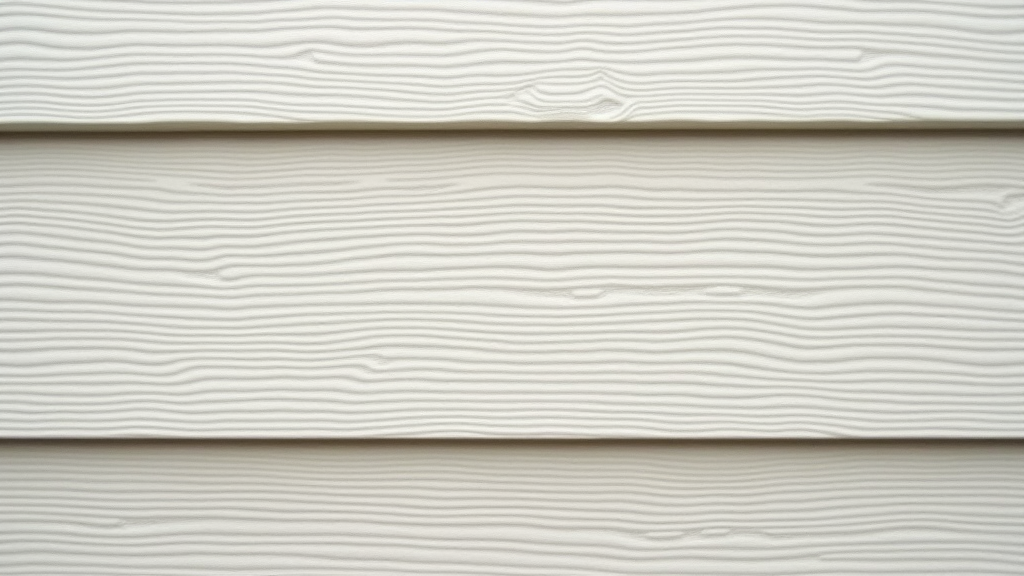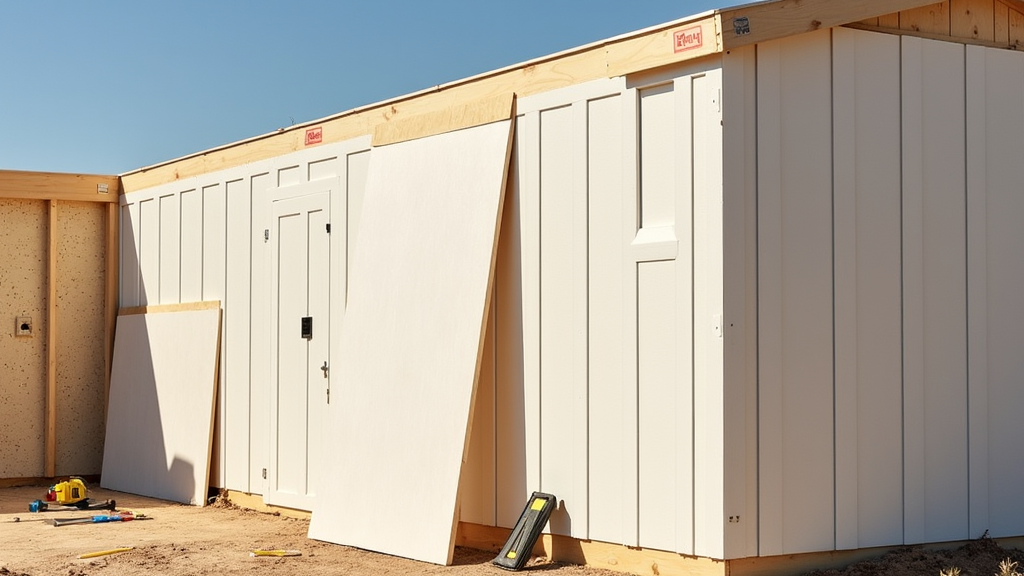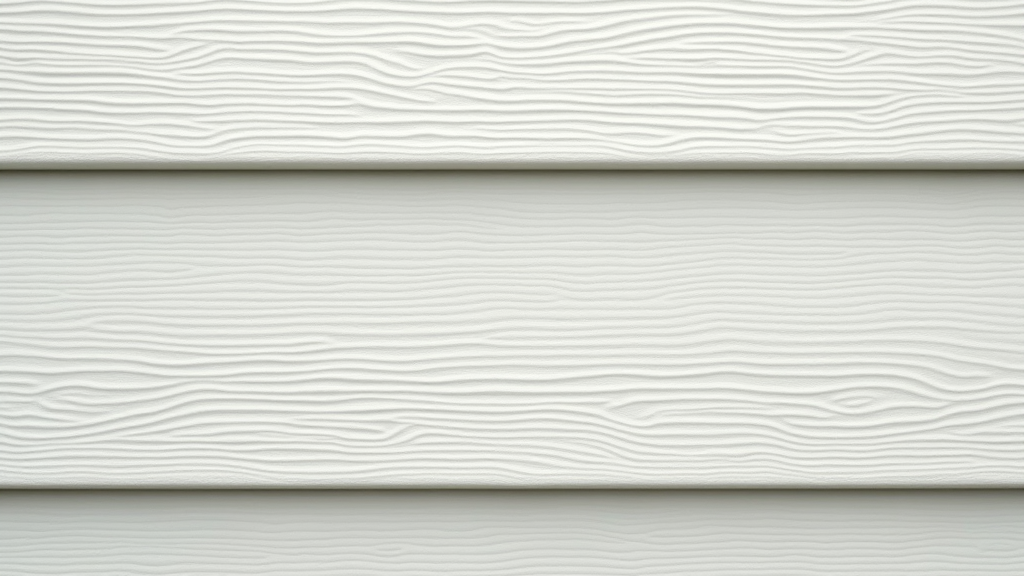Hardie board siding offers a reliable and modern alternative to vinyl siding for homeowners looking to update their home’s exterior. I have found that the benefits of Hardie board have made it a worthwhile upgrade over traditional vinyl options. This article digs into why many choose Hardie board siding and includes an all-in-one comparison with vinyl siding. The information provided here is designed to help you make an informed decision about which material best suits your unique needs.

Benefits of Hardie Board Siding
I have seen that Hardie board siding stands out for several reasons. It is durable, weather resistant, and low maintenance. Unlike vinyl siding, Hardie board is made from fiber cement. This gives it strength and longevity which make it suitable for homes in various climates. Homeowners appreciate that Hardie board does not warp or melt under extreme heat. Its robust material composition is designed to resist damage from harsh environmental conditions. I value these qualities because they mean fewer worries when nature gets tough and help protect your home for decades.
Additional benefits include improved fire resistance, a broad range of design options, and a more natural appearance that many find appealing. Hardie board can mimic the look of wood, and it is available in various textures and styles. Its versatility allows for an eye-catching finish that can complement both modern and traditional architecture. Investing in Hardie board not only gives your home a next-level cool curb appeal but also provides long-term performance that helps save on repair and maintenance costs over time.
Comparative Analysis: Hardie Board vs Vinyl Siding
Choosing between Hardie board and vinyl siding requires a careful look at the features that both products offer. I have taken note of several key points that help in the decision-making process. Hardie board is manufactured with a concrete-based material that contains sand, cellulose fibers, and cement, making it exceptionally strong and resistant to moisture. In contrast, vinyl siding is made from PVC, a plastic material that is lighter and more prone to fading and cracking under extreme environmental stresses.
This contrast in materials is highlighted in the following points:
- Material Strength: Hardie board is tougher and more durable due to its cement content. Vinyl siding tends to be more flexible, but that flexibility can lead to wear over time.
- Maintenance: With Hardie board, cleaning and painting as needed are straightforward tasks. Vinyl siding typically requires less day-to-day maintenance, but issues such as warping or cracking may eventually force you to replace panels.
- Aesthetics: Hardie board exhibits a natural look similar to real wood. Although vinyl siding is available in many colors, it can sometimes come across as less authentic and more manufactured.
This comparison shows that although vinyl siding might seem attractive due to its lighter weight and initial cost advantages, Hardie board provides long-term value through its resistance to environmental damage, life-like appearance, and overall strength. Choosing the right material now can have significant benefits down the road.
Tips for Homeowners Considering Hardie Board
When planning a home renovation, I have learned that being well informed about the materials you choose is very helpful. For homeowners thinking about upgrading to Hardie board siding, several tips can help smooth the way during the process. It is important to budget for the upfront cost of installation. Hardie board typically requires a higher initial investment than vinyl siding. However, many see this as a down payment on long-term savings achieved through fewer repairs and an extended lifespan.
Here are some practical tips to consider if you are exploring Hardie board:
- Research Local Contractors: Find experienced professionals who have worked with Hardie board. Their expertise can help you avoid common installation mistakes.
- Check Warranty Options: Choose a contractor who offers strong warranties for both materials and workmanship. This gives you peace of mind as you enjoy your upgraded home exterior.
- Study Local Requirements: Make sure you understand any building codes or permits that might be needed, as these regulations can affect installation methods and costs.
- Evaluate Long-Term Benefits: Consider energy efficiency, longevity, and aesthetics. Hardie board is known for its insulating properties and visual appeal, which can add to your property’s overall value.
- Plan for Maintenance: Familiarize yourself with maintenance programs that suit your lifestyle. Even though Hardie board requires only basic care, staying informed about proper cleaning and repair techniques is really important.
This approach of thorough research and careful planning helps homeowners transition confidently to a siding material that better meets their needs over time.
Key Considerations Before Switching Siding
Before making the move to Hardie board siding, I recommend weighing a few key factors carefully. Making an informed decision can bring lasting satisfaction with your home’s exterior. Cost is a primary factor to consider. Hardie board siding usually comes with a higher price tag than vinyl. The labor involved in installation is more intricate because of its weight and fibrous composition. However, many homeowners see the added cost as an investment in quality and durability.
Other important aspects to consider are:
- Environmental Impact: Hardie board is regarded as more eco-friendly compared to vinyl. Its production generally uses fewer fossil fuels and creates less harmful waste, making it a better choice for those who care about sustainability.
- Performance in Extreme Weather: For regions prone to extreme weather, Hardie board stands up better than vinyl. It does not corrode, warp, or suffer damage easily when exposed to sun, rain, or hail.
- Resale Value: Homes with Hardie board siding often enjoy a higher resale value. Prospective buyers appreciate the robust appearance and long-lasting durability of the material, making the investment very important over time.
These considerations remind me that although the initial expense may be steeper, the overall performance and long-term benefits of Hardie board siding can more than pay off. Many homeowners choose Hardie board because it complements both modern and traditional architectural styles while providing lasting advantages against weather and time.
Advanced Techniques and Maintenance Advice
For those who already use Hardie board or professionals working with this material, advanced installation and maintenance techniques can help maximize its benefits. I regard these tips as very important for ensuring that the siding looks good and lasts a long time. Proper installation is key, as many issues with siding performance arise from improper practices. I recommend hiring skilled professionals who specialize in Hardie board installation. They use techniques specifically designed for fiber cement products, ensuring that the board is properly sealed and fastened. This careful approach can help prevent water infiltration and other common issues that could compromise the material over time.
Maintenance on Hardie board siding is also straightforward if you stick to a regular routine. I have found that periodic cleaning and thorough inspections go a long way in maintaining the board’s integrity. Regular checks for any signs of cracking, chipping, or wear allow you to take care of minor issues before they become major repairs. When problems are detected early, minor fixes can be handled quickly, saving you money and keeping the board in top condition.
Here are some advanced tactics I have found effective:
- Sealant Checks: Regularly inspect the sealant at joints and edges. A high-quality sealant is essential for preventing water damage and prolonging the life of your siding.
- Repainting: When the color begins to fade, it is wise to plan for repainting. Use paint that is suitable for fiber cement siding to extend its life and keep it looking fresh and vibrant.
- Professional Inspections: Schedule annual inspections with professionals who can spot hidden signs of wear that might not be obvious to the untrained eye.
- Cleaning Routine: Adopt a gentle cleaning routine using a soft wash system. Avoid aggressive cleaning methods that might damage the surface of Hardie board.
These steps are useful not only for maintaining the appearance of your home but also for ensuring that the siding continues to perform reliably over the years. Keeping up with a regular maintenance schedule can help prevent unexpected repair costs and make sure your investment in quality materials continues to pay dividends over time.
Frequently Asked Questions
I have noticed that many homeowners often have similar questions when comparing Hardie board and vinyl siding. Below, I address some common queries that might help clarify your decision-making process.
Question: What makes Hardie board siding more durable than vinyl siding?
Answer: Hardie board’s cement-based composition offers superior resistance to impacts, weathering, and fires. Although vinyl siding is generally easier to install, it can suffer from cracks and fading over time, which may lead to costly repairs.
Question: Is the higher cost of Hardie board justified?
Answer: Many homeowners find that the increased upfront cost is offset by lower long-term maintenance expenses, improved energy efficiency, and higher resale value. The superior performance and aesthetics of Hardie board provide benefits that truly make a difference over many years.
Question: How does Hardie board perform in extreme weather conditions?
Answer: Hardie board is engineered to perform well in various climates; it can withstand high winds, heavy rain, and strong sunlight without degrading. This reliability makes it especially suitable for regions that experience frequent environmental stresses.
Question: What should I look for when hiring a contractor for installing Hardie board siding?
Answer: It is very important to choose experienced contractors who have specific knowledge of fiber cement products. Ask to see past projects, check warranty offerings, and ensure that they follow proper installation techniques to avoid future problems.
Final Considerations and Next Steps
Deciding on Hardie board siding as an alternative to vinyl siding involves a careful balance of cost, durability, and visual appeal. I appreciate the fact that Hardie board provides a robust solution by offering a boosted resistance against harsh weather conditions and challenging environmental factors. Homeowners who choose Hardie board find that the higher initial investment pays off over the life of the siding. The material’s natural look, coupled with its excellent performance in adverse conditions, gives a timeless appeal that enhances many home styles.
The switch up from vinyl to Hardie board is often a sign of a commitment to long-term quality. I have come to see that investing in quality products like Hardie board not only improves your home’s exterior aesthetics but also contributes to better energy efficiency and overall property value. This decision is much more than a superficial upgrade—it represents a thoughtful approach to home improvement that factors in reliability and longevity.
Before you move forward, take the time to research further, consult with trusted professionals, and review your home’s specific needs. These steps will help ensure that your investment in Hardie board siding brings lasting satisfaction and performance. Upgrading to this durable siding can be the right move to boost your home’s curb appeal while ensuring its structure remains strong for years to come.
Additional Insights and Extended Considerations
When it comes to choosing the perfect siding, many homeowners find that the details can make a big difference in the long run. One aspect worth considering is the array of color and texture options available with Hardie board. These options allow you to customize the look of your home in ways that feel very personal and truly unique. The wide range of finishes lets you mix in some variety, ensuring that your home stands out in the neighborhood. The natural, wood-like appearance of Hardie board also means that you’re not just choosing a siding material—you’re investing in an artful presentation that adds character to your property.
Additionally, it is really important to consider the environmental benefits. Hardie board siding is produced with sustainability in mind, using processes that are designed to reduce harmful emissions. This eco-friendly approach makes it a smart choice for those who are looking to build or renovate with a mind toward a healthier planet. By opting for materials that have a lower environmental impact, you not only improve your home but also contribute to a greener future.
Real-Life Experiences and Expert Opinions
Many homeowners who have made the switch up to Hardie board siding share their positive experiences. One common sentiment is that while the initial cost might be higher, over time the reduced need for maintenance and repair truly makes a noticeable difference. Experts in home construction often mention that the durability of Hardie board is second to none, especially in areas susceptible to extreme weather. Professional contractors have also noted that the installation process, though requiring skilled labor, results in an exterior that stays attractive and resilient for a long time.
Case studies from various regions indicate that properties with Hardie board siding not only look more appealing but also maintain their structural integrity in ways that vinyl cannot match. Homeowners who have faced severe weather challenges report that their Hardie board has reliably handled everything from torrential rains to intense heat waves without showing significant signs of wear. These real-life experiences underscore the practical benefits of choosing a material that truly stands the test of time.
Long-Term Investment and Home Improvement Trends
Looking ahead, the trend in home improvement is clearly favoring materials that promise longevity and a lower overall cost of ownership. Hardie board siding is at the forefront of this movement, offering a smart long-term investment. By choosing Hardie board, you are opting for a product that not only looks appealing right now but will also continue to perform well into the future. It is a choice that aligns with the growing awareness of sustainable building materials and the importance of reliable home infrastructure.
When you make the decision to upgrade your siding, you are making a strategic home improvement choice that rounds out the overall value and energy efficiency of your property. Homeowners are increasingly recognizing that the benefits of durability, aesthetic versatility, and lower maintenance needs far outweigh the initial costs. This next stage in home improvement is about ensuring that every investment you make today contributes to a stronger, more energy-efficient, and beautiful home tomorrow.
Wrapping up, choosing Hardie board siding is more than just a design decision—it is a strategic plan to improve your home’s long-term performance and curb appeal. With careful planning, research, and professional guidance, you can enjoy a home that is not only visually appealing but also built to endure the challenges of time and nature. The benefits of this investment are sure to be felt for years to come, making your home a source of pride and a safe haven in every season.


